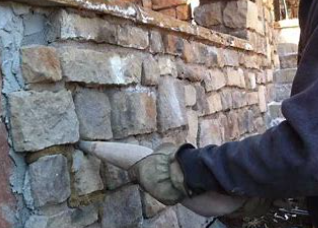Charging Battery-Powered Outdoor Tools: What You Need to Know
Outdoor power tools have become incredibly convenient in modern times, offering efficiency, eco-friendliness, and ease of use. To keep these tools in top shape and extend their lifespan, it’s crucial to understand how to charge your battery-powered equipment. Here’s what you should know about charging battery-powered outdoor tools:
Use the Proper Charger
When charging battery-powered tools, it’s essential to use the appropriate charger provided by the original equipment manufacturer or one that meets their specifications. Using the wrong charger can damage the tool’s battery, causing overheating and potentially leading to an explosion. Consult the owner’s manual or contact the manufacturer if you’re unsure about the correct charger to use.
Avoid Overcharging
To maximize battery capacity and lifespan, it’s important to avoid overcharging. While most battery-powered tools come with an automatic shut-off safety feature when the battery is full, it’s still crucial to monitor the charging process. Follow the recommended charging times provided in the user manual and avoid leaving the battery to charge for an extended period (this is less critical with lithium-ion battery technologies compared to others).
Charge Before Every Use
For optimal performance, especially when using the tool for the first time, ensure that you fully charge the battery before each use. This ensures the battery is at its maximum capacity and should deliver optimal performance. Additionally, recharge the battery after every use to extend its lifespan (this is not recommended for Ni-MH chemistries that exhibit memory effects).
Consider Temperature Conditions
Temperature plays a vital role in charging and using battery-powered outdoor tools. Extreme heat or cold can affect battery performance and overall lifespan. Charge the battery in a well-ventilated area away from direct sunlight and store it in a cool, dry place when not in use. Avoid charging the battery in freezing temperatures, as it can damage the cells and reduce capacity. Similarly, using the battery in excessively hot conditions can lead to overheating and decreased performance. Always adhere to the manufacturer’s temperature guidelines for charging, usage, and storage to ensure optimal battery longevity.
Regular Inspection and Maintenance
Like any equipment, battery-powered outdoor tools require regular maintenance. Take the time to inspect the battery for visible damage or signs of wear, such as cracks, frayed wires, or corrosion. Replace or repair damaged components as needed. Keep the battery contacts clean and free from dirt or debris, as these can affect the charging process. If your battery has removable cells, ensure they are properly seated and securely attached. Regularly checking and maintaining the battery will help ensure its optimal performance and prolong its lifespan.
Ready to power up your outdoor tools with reliable batteries? Explore our extensive range of high-quality products and services at Ernest Maier, including our brand new tool truck. Visit our website now to discover our offerings, and contact us today for expert guidance in finding the perfect battery solution for your specific needs!

Outside SalesRick Willis
Latest News

4 Ways To Reinforce Concrete
Concrete is one of the most fundamental materials used in construction. If you’re working on a domestic project or a […]

The Environmental Benefits Of Using Ready-Mix Concrete
The construction industry is changing quickly to meet the growing demand for sustainability and eco-friendly practices. One of the most […]

6 Essential Tips For Grouting Stone Veneer
Grouting stone veneer is an important step in the installation process that can significantly impact the overall look and durability […]

Should You Fill Hollow Concrete Blocks?
Hollow concrete blocks are widely used in construction due to their strength, versatility, and lighter weight compared to solid blocks. […]
